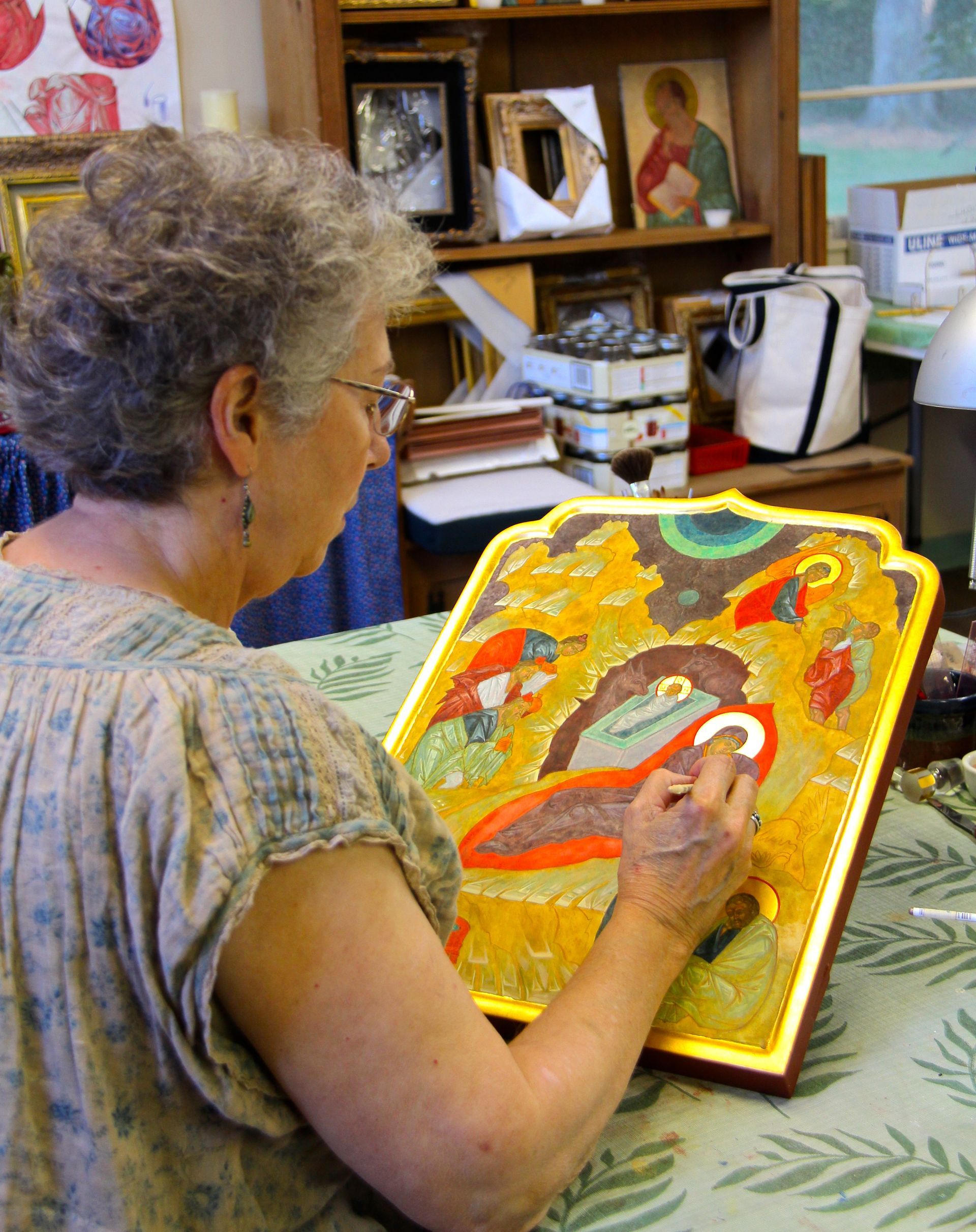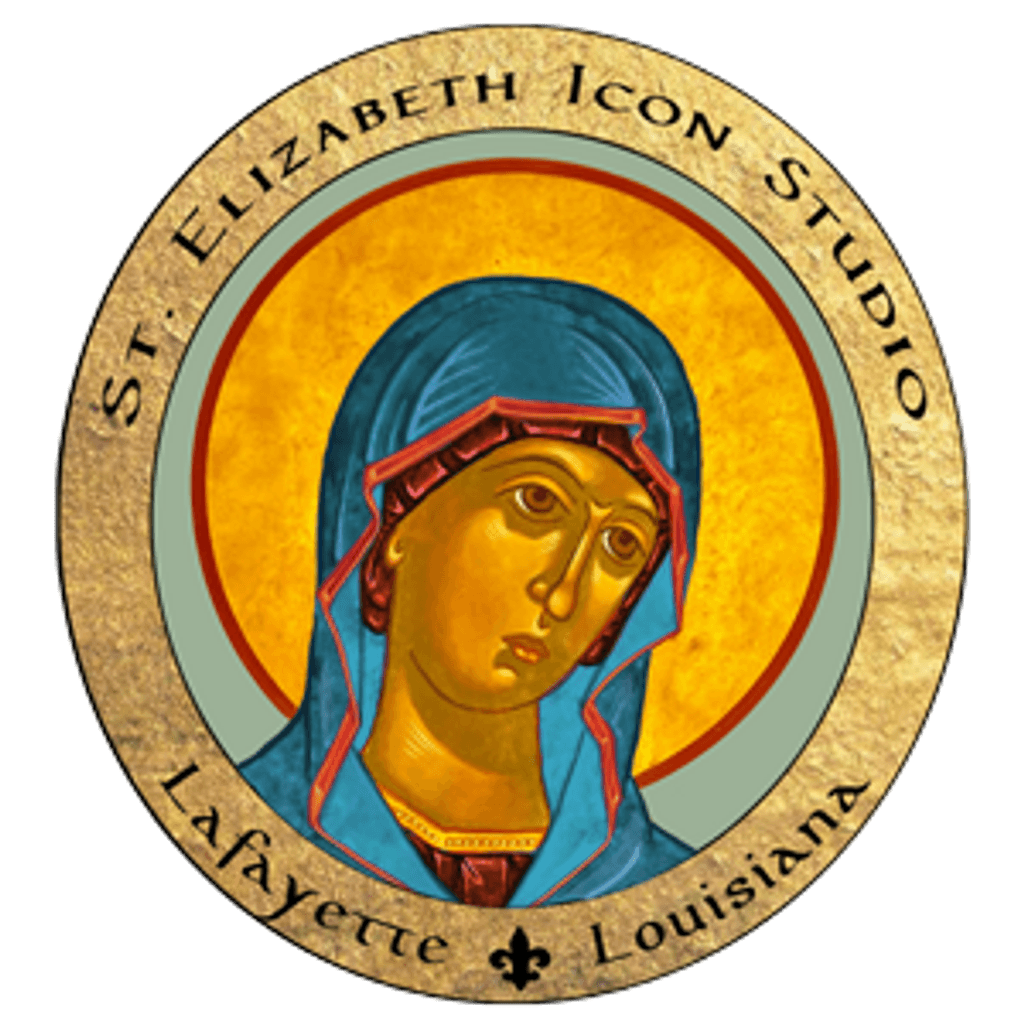About the Studio
St. Elizabeth Icon Studio in Lafayette, Louisiana, is currently an online source for the study and painting of icons under the instruction of Faye Drobnic. The studio is affiliated with the Prosopon School of Iconology founded by Russian iconographer Vladislav Andreyev and his sons Dmitri and Nikita. Our focus is to teach the fundamental skills of icon painting in two live 12-week Zoom sessions each year: Winter/Spring and Summer/Fall. We offer two separate levels of weekly instruction: one focused specifically on the needs of beginners and another taught at a more advanced pace for experienced painters. All students have the opportunity for personal assistance in separate weekly critique classes. We encourage attendance at the live 6-day workshops of the Prosopon School whenever possible. We believe that a combination of live workshops and regular online classes is the best way to learn to paint icons today. To further support icon painting throughout the year, we also offer tutorial packets and previously taught recorded video classes as other forms of instruction. Through our live Zoom classes, we are connecting students from all over the USA into a supportive community of icon painters. We invite you to join us!

THE INSTRUCTOR: Faye Drobnic was a decorative painter for 20 years before she began studying iconography in 1993 with master iconographer Philip Zimmerman at the St. John of Damascus Icon Studio at the Antiochian Village in Ligonier, PA. She continued her studies with other masters, including Charles Rohrbacher at the Mt. Angel Iconography Institute in Oregon, Heather MacKean at the North Florida Iconography Institute in Florida, Ksenia Pokrovsky of Izograph Studio & Hexameron, and others. In 1996 she began studying with the Russian master iconographer Vladislav Andrejev and his sons Dmitri and Nikita. They have been her primary teachers over the years. Faye is currently an affiliated teacher with the Prosopon School. She began teaching local students in 2009 in Lafayette, Louisiana, and in 2012 she established St. Elizabeth Icon Studio to accommodate both local and out-of-town students. With the advent of Covid she moved the studio online and began offering live Zoom classes for both beginning students and intermediate level students.
Faye holds bachelor’s degrees in both Liberal Arts and Secondary Education from Louisiana State University in Baton Rouge, LA and a master’s degree in Pastoral Studies from the Loyola Institute of Ministry in New Orleans, LA. She worked in the Roman Catholic Diocese of Lafayette Office of Worship for 15 years and currently serves as organist at St. Patrick Catholic Church in Lafayette. In addition to teaching icon painting online through St. Elizabeth Icon Studio, she also coordinates an annual live 6-day workshop for the Prosopon School in Grand Coteau, LA.
THEOLOGY OF THE WORK: The Second Council of Nicaea in the year 787 AD defined the icon as “the visual Word of God, the Gospel in line and color.” The Byzantine icon was the sacred art of the undivided Christian Church of the first millennium. Its purpose was to faithfully transmit the truths of the Christian Tradition to the faithful. Iconography, the art of painting the icons, was passed on from one iconographer to another through ages, following the canons (guidelines) set by the bishops of the Church. The tradition of the Byzantine icon was preserved and perpetuated in the eastern Orthodox Churches from the early centuries until the present day. The sacred art of the Roman Catholic Church in the west evolved through various artistic styles over the centuries: Romanesque, Gothic, Renaissance, Baroque, etc. Today the churches of the West are rediscovering the beauty of the early Byzantine icons. Western sacred artists over the past decades have begun to study with Orthodox iconographers to reclaim the lost tradition of the oriental icon and to introduce it again into the western churches and the lives of western Christians.
THE PROCESS: The work of painting an icon is rooted in prayer — the prayer of the iconographer and, if it is a commission, the prayer of the person commissioning the work. The prayer of the iconographer is more than saying words; it is a way of life–striving to follow the teaching of Christ, striving to live with a greater awareness of God. It is a journey. Prayer accompanies each step of the process of painting an icon, beginning with drawing the lines of the design on paper, then transferring them to a gessoed wood panel. After the lines are transferred and etched (or painted), the halo is gilded, using red clay bole and 24Kt gold. The colors are then applied to each element of the design — multiple layers of dry pigments mixed with fresh egg yolk. The pigments come from nature — ochres and oxides from the earth, minerals from rocks, organic pigments from vegetables or animal sources. The last step of the painting is the naming of the icon — painting the name of the saint or the event. The process ends with the application of a finishing coat of oil or varnish called olipha.
